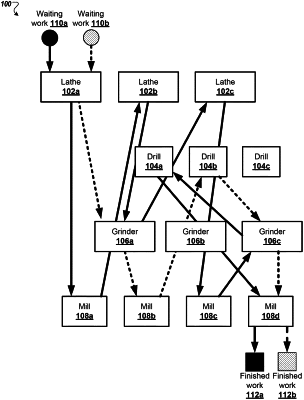| CPC G05B 19/4188 (2013.01) [G05B 13/027 (2013.01); G05B 19/41825 (2013.01); G05B 19/41885 (2013.01); G06N 3/08 (2013.01)] | 16 Claims |

|
1. A computer implemented method comprising:
assigning machine tool workstations in a factory to multiple pull system groups, wherein each pull system group includes similar machine tool workstations;
using Deep Learning techniques to determine, for the each pull system group of the multiple pull system groups, candidate sequences of current parts to be processed by the machine tool workstations assigned to the each pull system group, comprising:
training, for the each pull system group of the multiple pull system groups, a respective neural network to process a data input representing multiple parts to be processed by the machine tool workstations assigned to the each pull system group and generate a data output representing a candidate sequence of parts that, when processed by the each pull system group, improves a value of a predefined performance metric for the machine tool workstations assigned to the each pull system group, wherein the training of each neural network is performed using respective training examples that are determined offline using a branch and bound method;
receiving data that represents the current parts to be processed by the machine tool workstations in the factory;
processing subsets of the received data using corresponding trained neural networks to obtain the candidate sequences of current parts to be processed; and
verifying whether the determined candidate sequences of current parts to be processed will be delivered on time using Little's Law.
|